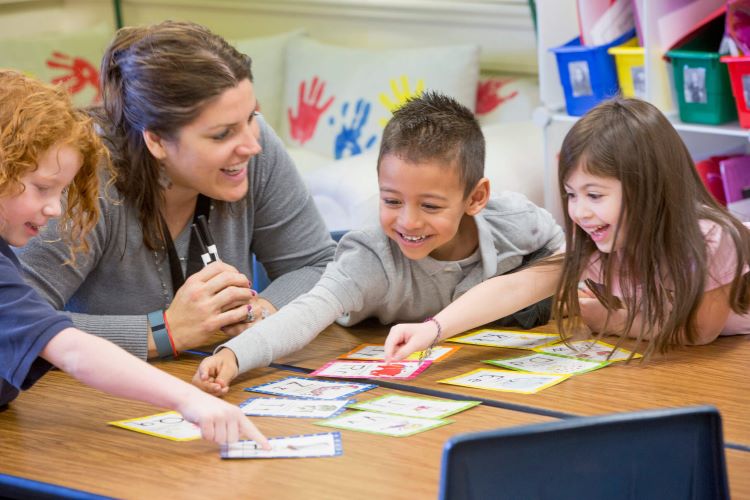Engaging students’ minds is an important aspect of effective teaching. When students are actively involved in their learning process, they are more likely to retain information and develop critical thinking skills. They’re also much more likely to simply enjoy the learning experience.
To successfully capture their attention and interest, you can employ a variety of strategies that cater to different learning styles and preferences. Here are some effective ways to better engage students in the classroom. These techniques will help them crave learning both in and out of school.
Contents
1. Recess
Kids at recess may just look like they’re having fun without learning anything at all. However, that’s just not true. The movements that children make while on playground equipment build gross and fine motor skills. They strengthen the core muscles and improve balance and coordination. They even help kids develop awareness of their body and how it moves.
If your community doesn’t already have quality playground equipment, it may be time to speak with the park administration about installing new equipment. Once they learn the benefits of swing sets, a slide, and monkey bars, they should be onboard. Playtime and recess let children use built-up energy while stimulating physical fitness opportunities. It’s also a great time for social interaction, which isn’t always allowed in the classroom. By incorporating regular recess periods, educators can support their students’ development and improve engagement.
2. Games
Kids often play games while at home. They may be playing Monopoly and Battleship, Minecraft or Fortnite, or simply making up their minds. However, you can be sure that kids are indulging in gaming scenarios when they aren’t at school. Introducing game-based learning — or gamification — into the classroom can help improve engagement levels. It can also access a student’s intrinsic motivation as well as their problem-solving skills.
Many lessons can be converted into gaming experiences within the classroom. Goals for games could include completing a lesson, learning a concept, or reaching a behavioral objective. Encourage friendly competition between students. However, remind students that they are truly racing against their own previous “score” or knowledge. The point is for each student to learn more than they knew before.
You can make the game personal by allowing students to pick their end goal or create their progress chart. You can even allow them to design an avatar that gets displayed at the front of the class if they win. By incorporating games into your teaching strategy, you can create a dynamic and engaging classroom environment that promotes learning and retention.
3. Technology
Using technology in the classroom can improve student engagement and learning. You can access tech devices like tablets, smartboards, virtual reality, and augmented reality. These resources further your students’ learning experience and excitement for school. Introducing interactive sites and apps allows students to develop their understanding of technology too. Collaboration tools, like Trello or Google Workspace, can help students work together, and you can still monitor each student’s contribution.
Modern technological advancements allow you to create simulations and virtual field trips too. You can bring concepts to life and cater to different learning styles. Technology makes personalized learning easier. Students can explore topics at their own pace and access resources tailored to their needs. By using technology in the classroom, you can empower students to become active participants in their education. At the same time, you prepare them for professional success in a digital world.
4. Group Activities
Group work is a good way to break up the hushed quiet of a typical day in the classroom. But there’s so much more to it than that. Collaborating with others in small groups allows students to gain the perspective of others. They can better their understanding of a topic and learn to express themselves. You’ll want to form groups with mixed friends, encouraging discussions since they already know some members of their group. Creating the partners yourself also enables you to prevent troublesome groups from forming.
Classroom discussions are another type of group activity that engages students. The teacher shouldn’t always be at the center. It is your job to encourage your mentees to share their opinions and defend their stance on a topic. A friendly debate opens students up to differing views. It is a good way to teach learners to express themselves clearly and listen quietly when others speak.
Topics can range from personal experiences within the home or community to current events within the state, country, and world. The wider the scope, the greater the opportunity to teach children to see how outside happenings affect their lives. It also helps them to grow concerned for the health, safety, and happiness of others.
Student Engagement
Engaging students in the learning process is important for academic success and personal growth. You can create dynamic and interactive learning situations that cater to all of your students, regardless of their learning style. These approaches not only enhance student engagement but also promote development, critical thinking, and collaboration. You should continue to explore innovative teaching methods in the classroom. It’s important to prioritize student engagement to create meaningful learning experiences that inspire creativity, curiosity, and lifelong learning.

